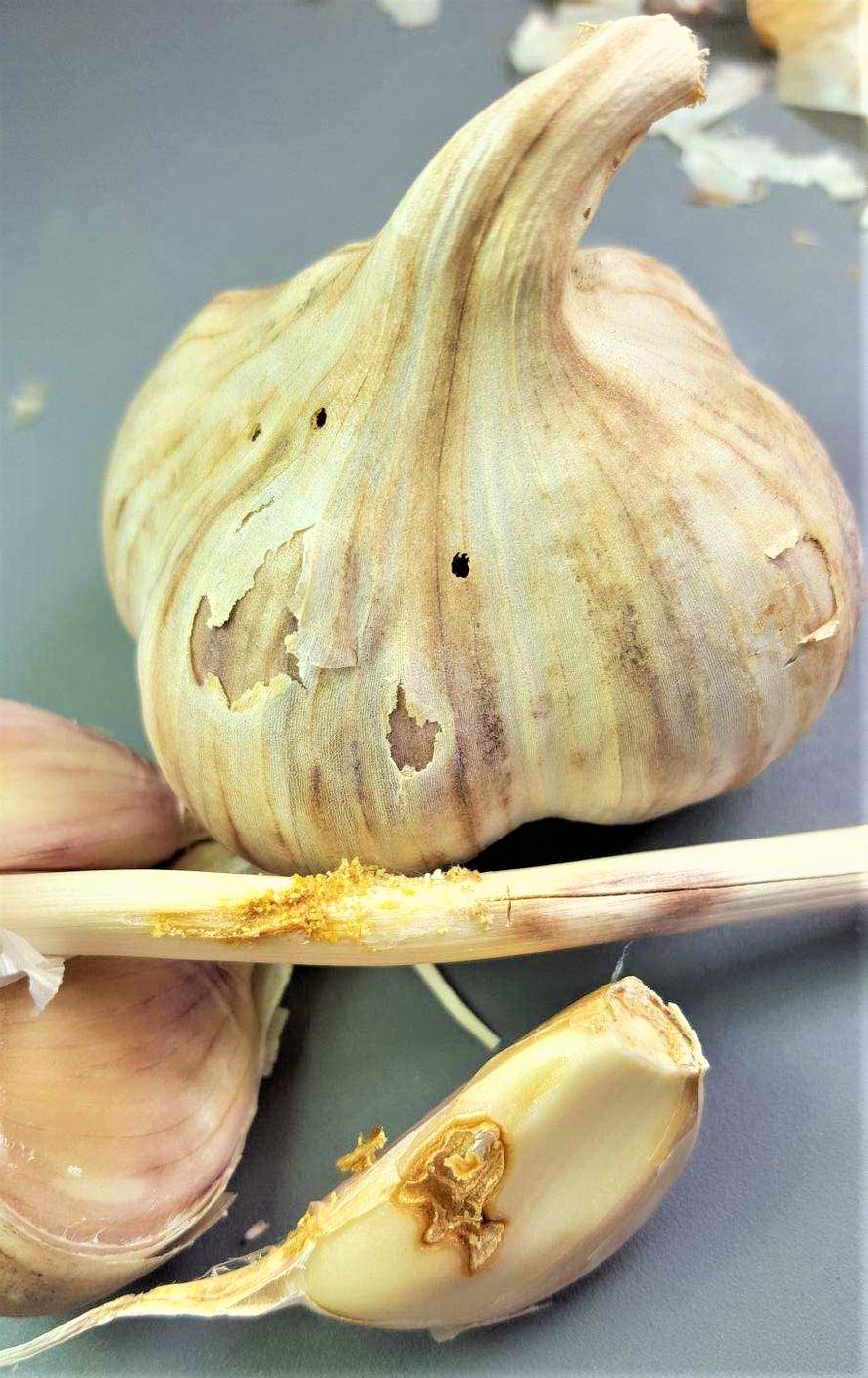Garlic: Diseases and Symptoms

Are you in need of in-depth knowledge on onion and garlic production? If yes, we are a call away. Our service chatter includes: Onion seedlings, Garlic seedlings, Farm planning services, Soil testing, Drip irrigation installation and maintenance, Agronomic support, Onion and Garlic value pack and Farm management. For free consultation, placing orders or booking a visit with an agronomist, please contact us via Call or what’s app +254703982228, Email: Info@oniondoctor.co.ke.
Damping off:
Disease symptoms: Nursery affected with dumping off rot before they emerge out of the soil.
Post-emergence damping-off : The pathogen attacks the collar region of seedlings on the surface of soil. The collar portion rots and ultimately the seedlings collapse and die.
Survival and spread: Pathogen(s) survives on infected crop debris and soil which are source of primary inoculum.
Favorable conditions: The disease is more prevalent during hot season/rainy season and causes about 60-75% damage. High soil moisture and moderate temperature along with high humidity leads to the development of the disease
Purple blotch:
Disease symptoms: The symptoms occur on leaves and flower stalks as small, sunken, whitish flecks with purple coloured centres. The lesions may girdle leaves/stalk and cause their drooping. The infected plants fail to develop bulbs
Survival and spread: The disease is soil borne and fungus survives in soil, infected bulbs and may persist in plant debris or on roots of weeds.
Favorable conditions: Hot and humid climate with temperature ranging from 21-30° C and high relative humidity (80-90%) favor the development of the disease.
Stemphylium leaf blight
Disease symptoms: Infection occurs on radial leaves of transplanted seedlings at 3- 4 leaf stage. The symptoms appear as small yellowish to orange flecks or streaks in the middle of the leaves, which soon develop into elongated spindle shaped spots surrounded by pinkish margin. The disease on the inflorescence stalk causes severe damage to the seed crop.
Survival and spread: The fungus survives in plant debris or soil.
Favourable conditions: Warm (18-25 °C) humid conditions and long periods of leaf wetness (16 hours or more) favour disease development.
White rot (Sclerotial rot)
Disease symptoms: The initial symptoms are yellowing and dieback of leaf tips. Later, scales, stem plate and roots get destroyed. The bulbs become soft and water soaked. Later, white fluff y or cottony growth of mycelium with abundant black sclerotia resembling mustard grain develops on the infected bulbs.
Survival and spread: Fungus survives in soil as sclerotia for many years and it can over-winter in infected garlic debris and in diseased garlic sets.
Favourable conditions: This disease is most severe in cool and dry soils.
Downy mildew:
Disease symptoms: Leaves turn to pale green. On leaves, cottony white mycelial growth develops and appears white. Gradually the leaves turn pale yellow to dark brown and dries up.
Survival and spread: Fungus survives in soil and infected plant debris.
Favourable condition: Warm and humid climate favours the development of disease
Bacterial brown rot/Slippery skin
Disease symptoms: Field symptoms often appear as one or two wilted leaves in the center of the leaf cluster. These leaves eventually turn pale yellow and dieback from the tip while older and younger leaves maintain a healthy green appearance.
During the early stages of this disease, the bulbs may appear healthy except for a softening of the neck tissue. In a longitudinal section, one or more inner scales become watery or cooked.
The disease progresses from the top of the infected scale to the base
Eventually, all the internal tissue will rot. Finally, the internal scales dry and the bulb shrivel.
Squeezing the base of infected plants causes the rotted inner portion of the bulbs to slide out through the neck, hence the name slippery skin.
Survival and spread: This bacterium is soil-borne and can be readily water-splashed to the foliage and necks where it can enter through wounds.
Favourable conditions: This bacterium requires moisture for infection and grows in the temperature range of 5-41° C. Heavy irrigation and persistent dews are also conducive to this disease.
Onion Doctor supports small holder farmers across Africa with quality and affordable Onion and Garlic seedlings, Onion seedlings, Farm planning services, Soil testing, Drip irrigation installation and maintenance, Agronomic support, Onion and Garlic value pack, Farm management, E-extension and on-farm training for farmers to optimize on yields and get maximum profits.
